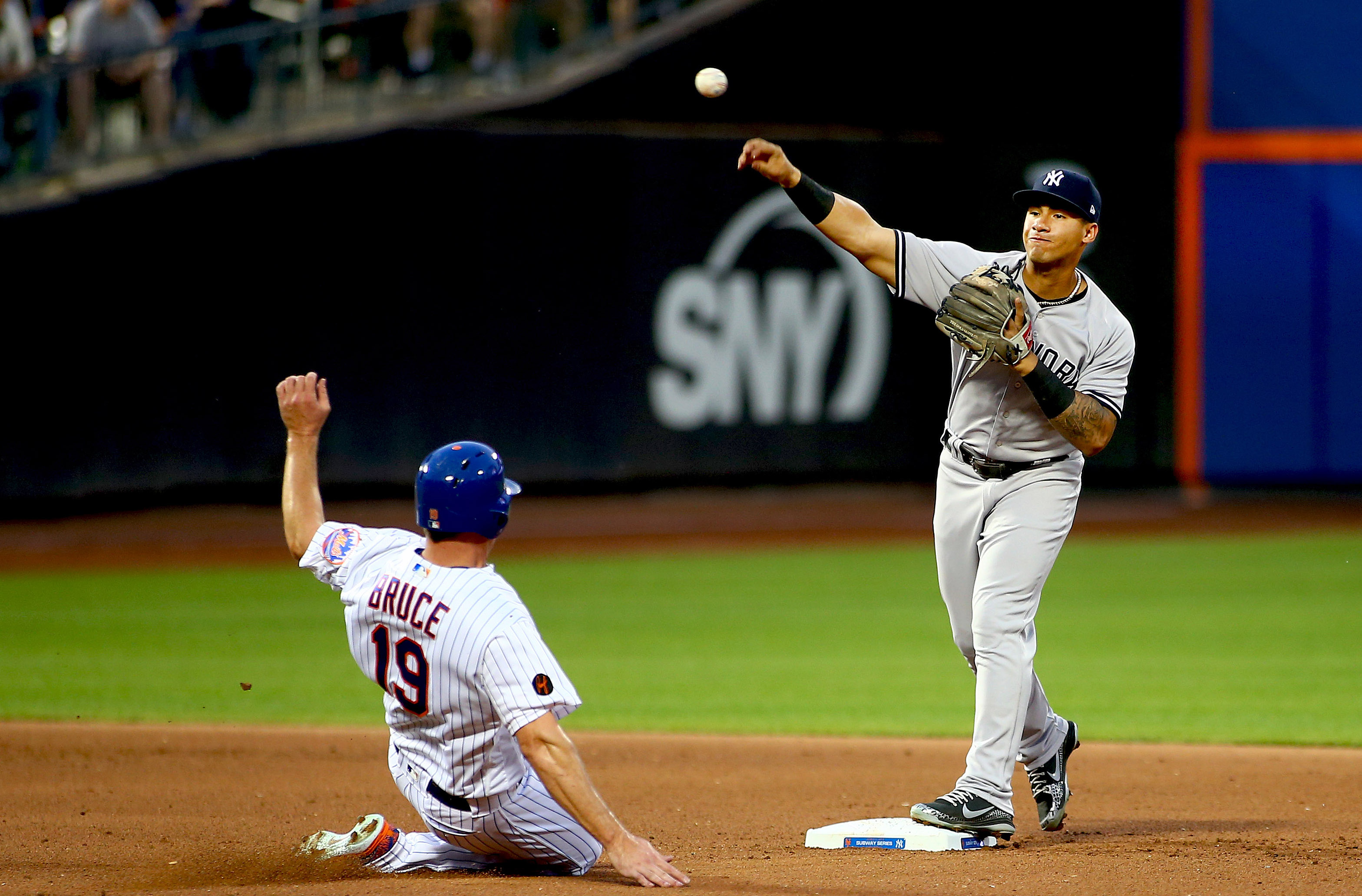Statistics as of Thursday, June 28
My ideal reading of this article’s title would be to have it punctuated by that frantic swirling noise serving as the transition between scenes in classic superhero shows and/or contemporary scenes paying homage to them. Should you have participated, that’s likely one of the few Mets-related moments you’ve had since mid-April that could be characterized as pure fun (unless you find the sound annoying, in which case, ignore the previous two sentences). Instead, while there have been bright spots like Brandon Nimmo’s heroics and virtually each half inning commanded by Jacob deGrom, their historically prodigious start looks ensconced in the realm of what-could’ve-been. Now, the season isn’t even halfway over (okay, 48.1%), and while there isn’t a singular fix to spark the offense, there’s an event that has seemed to appear at the most inopportune times: grounding into double-plays.
During that 11-1 start, the Mets ground into 11 double-plays. In the 66 games since, they’ve accumulated a further 51. So, initially, their production of double plays hasn’t changed by pure counting standards since the quick start. But as a percentage, they are fifth in baseball with 11.439% of double-play opportunities resulting in one. While these numbers alone could be interpreted as troubling in their own right, what I’d sought to explore further is not just how often, but when, the Mets grounded into double-plays.
For the purposes of this article, in tracking the Mets’ lead/deficit at the time of the play, I used the score when the plate appearance began, not after (e.g., on May 9, Asdrubal Cabrera scored when Kevin Plawecki hit into a double-play; the score following the play was 1-0 Mets, but, as it began with a tied score, I wrote that one down as having occurred with the Mets at a lead/deficit of 0).
The first level of when these plays occurred centers around the scoreboard: were the Mets leading at the time? Losing? By how much? Over the first 12 games, they averaged 5.08 runs/game, while over the subsequent 66, this has lessened to 3.77. Thus, especially across this second grouping of games, the situation is important in that a missed opportunity for a run here or there could add up to be the difference between their current record and playoff contention – illustratively, the first 12 games contained a 3-0 record in one-run games, while the next 66 have shifted to 5-15 in them. Supporting that trend is the fact that the Mets led by an average of 1.18 runs when they hit into double plays up through April 13; since, they’ve trailed by an average of 0.78 runs. Also worrisome for the ability to win close games is that a full third of the latter group have taken place with the Mets either tied or down by just a run.
Those were a lot of numbers – let’s see what it looks like in practice.
June 23: Facing Clayton Kershaw, the Mets were tied at 1 with the Dodgers, men on first and second and one out. Amed Rosario batting, he softly grounds to third to spark the double-play.
June 22: Down by two in the bottom of the eighth, runners at the corners, one out. On the first pitch of the at-bat, Jose Bautista acted uncharacteristically for his time in Queens by lacking patience and swung on a pitch verging on below the zone to end the inning.
June 21: The bordering-on-the-comical video that, if you haven’t seen it yet, will serve as unsubtle foreshadowing for this article’s conclusion.
What’s comical is that, despite a different Met to begin each double play, once they made contact, the results are virtually indistinguishable. Weak contact, combined with being hit within a few inches of one another, all directly towards the third baseman or shortstop.
Though these seven double plays occurred over a three-day span, they speak to the larger trend of a lineup that need to improve on making meaningful contact on opposite-field hits. That’s not to say that the prevalence of double plays is not in itself worrying; this is evidence of situational hitting that is, for one reason or another, less “clutch” than it could be. But in focusing on that singular event for this article, the realization at how easy some of these double plays have been for the defense to turn seems equally important as something to improve upon. Challenging the defense with harder hits is a first step; challenging oneself to direct contact towards the opposite side of the field is yet another.
Photo credit: Andy Marlin – USA Today Sports
